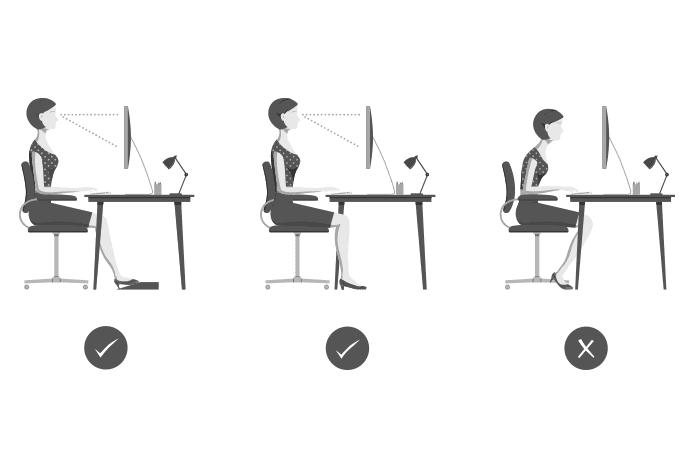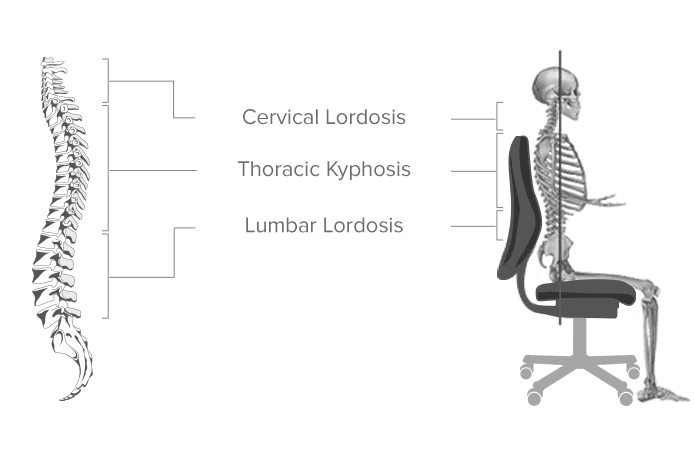Office Chairs for Bad Backs
By Aurora Commerce, 13th December, 2014
From time to time we’re all susceptible to developing back pain. Due to the nature of your job or perhaps even a hobby, you’re likely to find yourself sat at a desk or workstation for long periods of time. As we get older we all experience varying amounts of arthritis, including spondylosis and spondylitis. Nevertheless, choosing the right office chair and knowing how to use it not only ensures you’re as comfortable as possible when seated, but they can also work to prevent back problems in the future.

Selecting a Good Quality Chair
First of all, you should look for an office chair with good padding and sufficient lumbar support. As well as the overall cushioning of the body for comfort, it’s crucial that the backrest supports the right areas of the spine. A chair that fits into the curve of the lower back (the lordosis) is vital. Encouraging a good posture, this will lessen existing back pain as well as preventing it from developing in the first place.
Padding can also be employed higher up the backrest to support the upper section of the spine (the kyphosis) as well as the neck, as seen in the Bradgate.
Creating correct posture is key. Sitting with bad posture puts unnecessary strain on areas of your spine, applying undue pressure on the discs, joints and muscles. This not only causes pain in the back and neck, but it can also lead to headaches and a string of other health problems.
Yet just as important as choosing an office chair with the modern features is the way the chair is set up for you, and tailoring it to suit the height and size of your body.

Adjusting the Ergonomic Features
You can have the best chair out there with the latest features and functionality, but if you don’t adjust it to your personal requirements it won’t do you any good. The key to a pain-free back is setting your chair at the ideal position for you, and therefore it’s key you tailor it to your individual measurements before use. This will dramatically reduce the chance of developing a bad back, or if you already experience pain it can be adjusted as often as needed to find the most comfortable position.
All good office chairs should have the following functionality:
- Comfortable padding
- Backrest with quality lumbar support
- A gas lift mechanism for variable height
- A tilt mechanism
- Adjustable seat depth
- Two adjustable armrests
- 360 swivel
- A nylon caster base
We have covered all these features in detail in our Office Chair Buying Guide, but let’s look at them now in terms of how they affect the back.

How to Set Up Your Chair
First of all you need to adjust the height of the seat to the ideal elevation for your workstation. Being sat too high or too low at a desk can lead to bad posture as you have a tendancy to hunch or slouch, and can hence put strain on the spine. Ensure your eyes are level with the computer screen and your feet are flat on the floor. If your feet struggle to reach it, then invest in a footrest, as seen in the diagram above.
Next, adjust your backrest and seat pad to find a comfortable working position. We’re all guilty of slouching, but this can actually result in a curvature of the spine. The pressure of this can cause pain down the line, and therefore you should set your chair to an upright position that will encourage you to sit up straight. Tilt the seat pad so your thighs are roughly at a 90 to 95 degree angle to the body, and fix the backrest to about 100 to 110 degrees.
A tilting mechanism is recommended to allow flexible movement. Aches and pains can build when the body is fixed in the same position for too long, and thus a tilt function can aid good circulation as well as reducing tension and discomfort.
Seat depth should also be adjusted to maintain good posture. Make sure you’re sat firmly against the backrest, hips as far back in the chair as possible. The curve of the backrest should fit snugly in the small of your back, and there should be a slight gap between the backs of your legs and front edge of the seat pad.

Armrests should also be modified for your own usage. Your forearms and elbows should sit slightly higher than the desk, inviting you to lean back into the chair with your arms supported by the armrests, instead of hunching forward. Providing that extra support, it lessens the pressure on the shoulders and thoracic spine, as well as reducing the chance of developing repetitive strain injury (RSI) in your forearms.
We’d also advise a 360 swivel function. This ensures that the chair rotates with you when you turn, the rotation going through the seat and not your back. Sat in a stationary chair you can put stress on your spine when you twist your body round to speak to colleagues or reach a document. It’s not good for the spine to rotate in certain places, and hence a swivel mechanism is designed to prevent this.
Whilst not absolutely vital, a nylon caster base can also help. Instead of putting strain on your back by attempting to lift or drag the chair around the room when needing to move it, the wheels allow ease of mobility.
Yet whilst our stylish range of office chairs are highly ergonomic and designed to alleviate back pain when adjusted correctly, the fact is that the spine is not meant to be immobile for too long. Take regular breaks when working at a desk all day - preferably every 30 minutes - to get up, stretch and move around. Not only will this reduce the chance of back pain from developing, but it will ease the pressure on your muscles and joints, helping to keep them loose and ache free.
Why not take a look at our range below? Each of our office chairs are designed with your comfort in mind, and each provides a great level of support to the entire back.
Now that you know the ergonomic features to look out for in an office chair, why not browse our great range by clicking on the button below. Remember, if you have any questions about choosing the model with the right support for you, you can contact us here.
Related Articles
Differences Between Office Chair Types
We help you choose the office chair that's right for you and your space..
Office Chair Materials
Take a closer look at three materials we use in our office chair range..
Setting up the Perfect Home Office
Top tips for creating a practical, productive and stylish home office..

























